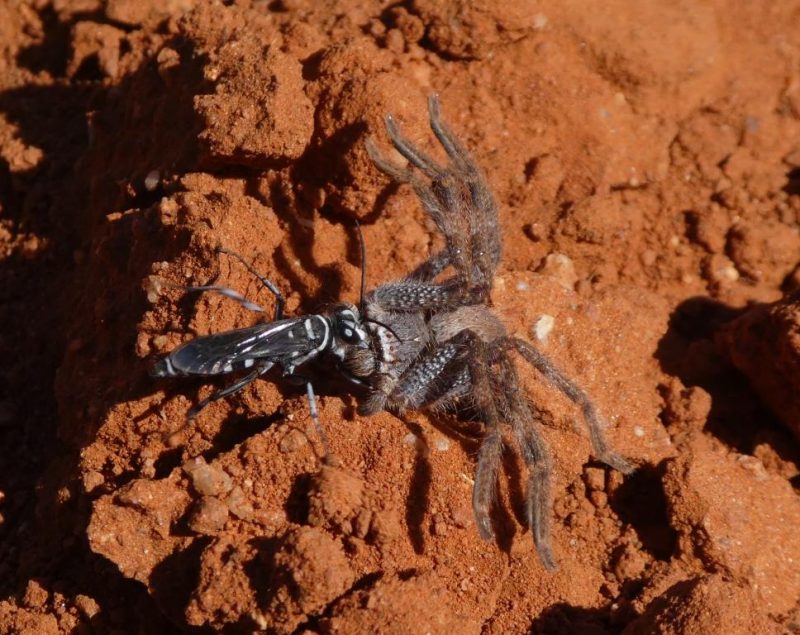By Caragh Heenan

Spider Wasps (Family: Pompilidae) are, as their name suggests, a family of Wasps that prey on Spiders (Order: Araneae). There are four subfamilies, including Ceropalinae, Ctenocerinae, Pepsinae, and Pompilinae, where coloration and wing appearance vary greatly among the many species. They are solitary Wasps that are native to Australia, and despite using spiders as prey for their young, the adults themselves feed on nectar from a variety of flowers.
The female of the species will generally start by digging into soft and sandy soil to prepare a nest chamber for their larvae, using long spines on their front legs. They will then search the area for a spider, which can be twice as heavy as the female. On finding a suitable prey, the Wasp will sting it and inject it with venom to paralyse it so it can drag it back to the burrow that has been prepared. Some species will bite the legs off particularly hairy spiders to make them easier to manoeuvre. An egg will then be laid on the body of the paralysed spider and sealed in the chamber. Spider wasps will also generally protect their nests by putting dead ants into the outermost chamber, as the chemicals will help to deter predators.
Once the egg hatches, the larvae has a pre-prepared meal on which to feed before pupating within the cell, following five instar stages. However, the size of the prey will determine whether the larvae develops as a male or a female (larger prey = large female, small prey = small males).
There are some behavioural differences within the family of Wasps, whereby some will not use a burrow but rather leave the spider and egg where it lays. There are also some species that will steal spider prey from other Wasps, known as klepto-parasitism.
The more you know, hey?!
~ Caragh Heenan
A note on the spider from local spider expert, Robbie Henderson:
“The spider is a Huntsman for sure, I believe it’s Neosparasis genus, but I don’t know the species. The genus is quiet easy to identify, they are sometimes called ‘Badge Spiders’ because of a marking on the underside of the abdomen, they also have distinctive ‘eye brow’ markings and are generally quite colourful as far as Huntsman go. They are also relatively small for Huntsman and have a more rounded body shape as they are not the sort of huntsman that retreats under bark, they often hang out in vegetation. Perhaps this is why they are commonly caught by wasps – most of the time I see a wasp dragging a spider around it has been a badge spider.”
~ Robbie Henderson
Categories:
Arachnids, Biodiversity, Invertebrates, Native Fauna